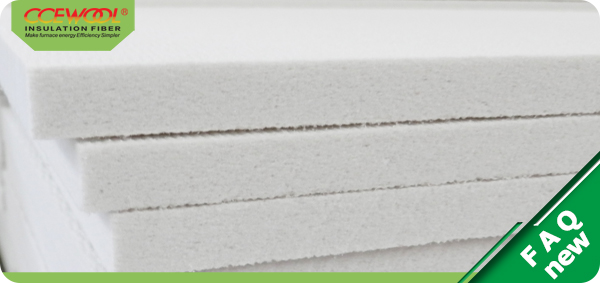In industrial production and building insulation, refractory ceramic fiber boards are widely used. With its excellent high-temperature resistance and insulation performance, CCEWOOL® Refractory Ceramic Fiber Board has become a “star material” in many high-temperature environments. However, a seemingly simple yet crucial question arises: can refractory ceramic fiber boards be directly touched? Behind this lies the issue of the safety of ceramic fiber boards and the importance of correct usage.
Three Potential Risks of Direct Contact — Be Alert!
Risk 1: Physical scratches. Although the surface of refractory ceramic fiber boards is processed, ordinary products may still have tiny burrs or protrusions—especially when cutting is imprecise, the edges can easily “hurt your hand.”
Risk 2: Dust irritation. During production and cutting, ceramic fibers may release small amounts of fiber dust. These tiny particles, only a few microns in diameter, can stick to the skin, clog pores, and cause itching or rashes. Sensitive individuals may even feel their “skin tightening” after light contact.
Risk 3: High-temperature burns (the most dangerous!). The very “high-temperature resistance” of refractory ceramic fiber boards means they may be scorching hot during operation. For example, just after an industrial kiln is shut down, the surface temperature may still reach several hundred degrees. Touching it with bare hands, even for a few seconds, can cause severe burns—this is the most dangerous “invisible hazard” in industrial settings.
CCEWOOL®’s “Thoughtful Craftsmanship”: Minimizing Risks
High-purity raw material melting and spinning process: Selected low-impurity, high-purity raw materials are fully melted in electric furnaces and spun into fibers, ensuring uniform fiber diameters and smoother fiber surfaces. This significantly reduces burrs and lowers the risk of scratches.
Fully automated CNC cutting: Precision equipment ensures smooth and neat board edges, greatly reducing hand injuries caused by rough edges during installation.
Low slag content control: Multiple slag removal processes strictly control shot content, reducing fiber dust release and minimizing irritation to skin and the respiratory system.
Surface composite technology: For residential and electrical applications, aluminum-foil composite boards have been developed. The dense foil layer not only enhances insulation but also prevents fiber contact with the human body, further improving safety.
Safety Guidelines — CCEWOOL®’s Friendly Reminders
To further ensure customer safety in practical use, CCEWOOL® provides the following recommendations:
Temperature check: Always use an infrared thermometer to confirm the surface temperature is below 40℃ before contact to avoid burns.
Industrial applications: During kiln maintenance and equipment repair, protective cut-resistant gloves and goggles must be worn. Cotton or nitrile gloves are recommended for handling to prevent scratches and dust irritation.
Residential applications: When directly touching uncoated boards in building or electrical scenarios, nitrile gloves are recommended. For aluminum-foil composite boards, as long as the foil layer is intact, light daily contact is completely safe.
Post-maintenance: After installation or cleaning, it is recommended to wash hands promptly with water and mild detergent to remove any fiber residue.
With over 20 years of focus on the research, development, and production of high-temperature insulation products, CCEWOOL® continues to provide refractory ceramic fiber boards with excellent performance and reliable safety through ongoing process upgrades and strict quality control.
Post time: Oct-13-2025


